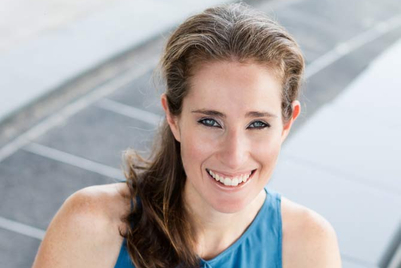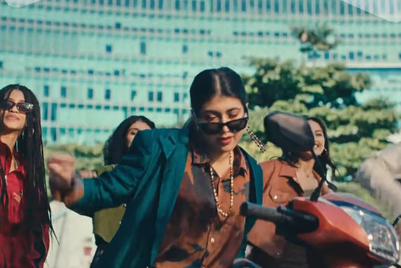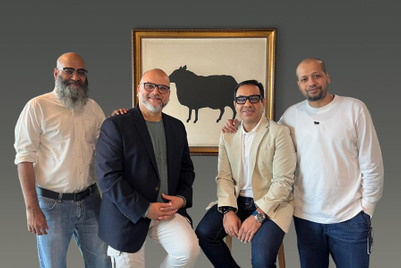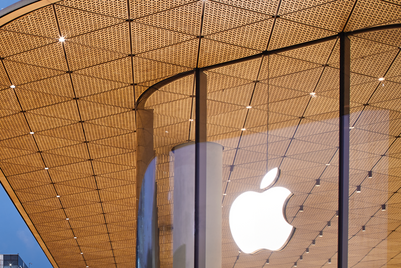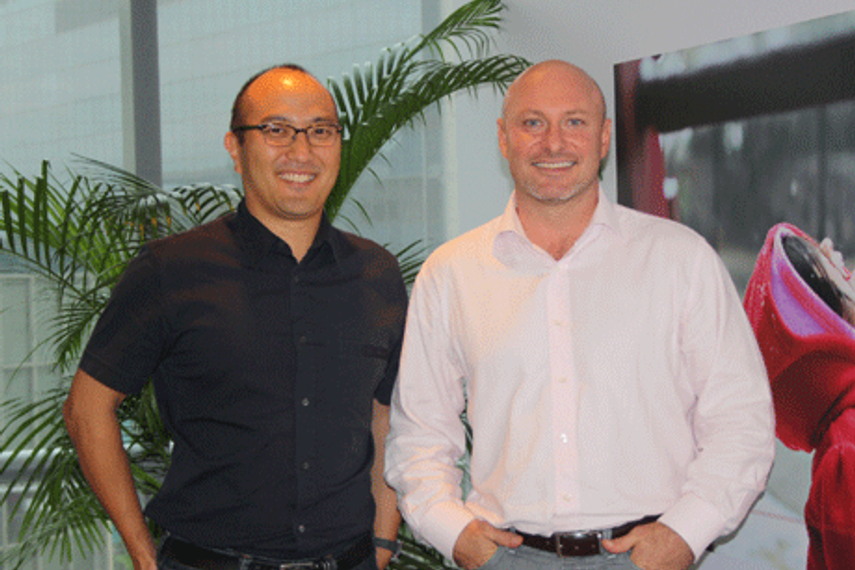
What are brands asking for in Western markets? Are FMCG brands also asking you for solutions?
Stephen Kim: It’s been very interesting that you do have all sorts of brands, obviously those in entertainment, movie studios, automotive who want to make a big splash with these branded experiences. The FMCG space is very interesting as they want to get into this space as well and typically what they are looking for in highly competitive markets and product lines is how do they differentiate from competition. One big area where they are keen to do more is how do they take advantage of interactive and the ways in which interactive can support their brand proposition, compared to television, print or traditional media. I would say that of all the areas that we do work, FMCG is the largest number of campaigns that we do on the high end custom scale. What we typically do for FMCG is a branded experience. For example Kellogg’s will work with us, and Frosted Mini-Wheats is a brand where they are in a very competitive space, and they were recently pursuing a brand campaign where they wanted to communicate not just that the cereal tastes good, but that it is also beneficial for moms. Specifically that eating Frost Mini-Wheats, because it’s a heavier cereal, will keep your children fuller and therefore more alert during a day in school. They came to us and asked us to do something on a custom basis that helps them with this value proposition. We created something called the ‘Mom’s homeroom’.
It’s an experience where moms can come in and give information that’s helpful to them on raising their children and helping them do well in school. We’ve recruited real moms and brought them in to talk about how do they deal with cheating in school and doing homework in subjects their children don’t like; it’s a resource centre for moms. We’ve done some brand research around it and it really does deliver on the promise for the brand.
Would this be a microsite?
SK: Yes, this would be a microsite which we would drive traffic to from our homepage by editorial placement. So we would say things in a headline like “Help your children do better in Math, when they hate Math”. We would get 5,00,000 people clicking on that in a day, drive traffic to our microsite where we would engage them with tools, tips and experiences where it would help them do better by their children with Kellogg’s.
What’s the process of storytelling at Microsoft?
SK: We are very passionate about storytelling as it exists today. How do we help tell stories for brands because every brand wants to tell a story. At the same time, consumers want to tell stories as well. Consumers always look for meaning and a story. How do we bring these two, the needs of markets and the desires of human nature of consumers, together. We’ve done a number of campaigns where we leverage the fact that consumers want to tell a story and use that to reinforce what a brand wants to communicate at the same time. So one example is Lexus: we wanted to reach a younger, slightly less affluent audience for their hybrid vehicles and knowing that that audience is trying to express themselves in different ways, and likes looking at the world from different views. We created something called ‘Fresh perspectives’. It brings together different artists with a common problem to be solved. So the fashion designer, photographer, and paper sculptor, all tried to solve the problem from their particular perspective. Then what we did was we created an experience, where if you signed into your Facebook, we grabbed all your data, gender, where do you hail from, how many friends do you have, how many friends do your friends have, and all those pieces of information were used to create a piece of abstract art on the fly that’s generated on your screen that tells you who you are according to your Facebook data. So this is the kind of thing that got us more than 10,000 people in the first month creating these pieces of art and then they shared it on FB and it became a part of the viral campaign. This is a way where we are helping consumers tell stories about who they are and creating these beautiful pieces of art that then reinforces the Lexus brand proposition that is “Help you see the world in a different way and express yourself”.
We look at experiences like that and then we also look at how people are starting to discover and navigate the digital world differently through experiences like ‘Deep Zoom’ which allow you to go very close into imagery. Connect is obviously a big area for us, interacting with gesture and voice, and then as we move forward integrating user generated content into things like mapping, where you can walk the streets of your neighbourhood and start to see user generated photos. These are the things that bring more power to storytelling and expose new ways for our consumers that are reinforcing what brands want to say. A simple metaphor I use with my team all the time is when you look at the history of media, when film was first developed, film cameras were used to record theatrical productions. The camera was fixed in the centre of the audience and used to film the play. It wasn’t for 18 years that someone figured out that if we moved the camera to move closer to the stage, we can get people’s emotions and create scenes. That simple act took 18 years. We are on the same metaphor with the internet and we are starting to realise we can move the camera around but wondering how do we really leverage everything around. Interfaces, voice and other techniques are the beginning of that evolution.
Do you often have to toe the line of what the mainline agency would have done? You may have this great idea but that’s not what the TV campaign is.
SK: If I meet someone at a wedding, I say I run a creative agency inside of Microsoft. If I meet someone here I don’t say that. What we do differently from a creative agency is that we run exclusively within our platform with our audiences. The way we explain it to a creative agency or a client is that you have your agency but think of us as an extension of your agency as it relates to MSN, Xbox or Live. We’ll work with the agency as we don’t want to go outside the guardrails of what they have set up. We want to take their ideas and truly bring them to life within our platforms. We sometimes come up with ideas different to what the agency wants to endorse and we respect that, but what typically happens is that the agency gives us direction and we enhance what they would have already done in different mediums.
Is digital cheaper compared to other mediums?
SK: In many markets, we look at the cost of production of a TV spot versus a digital campaign and immediately we are looking at something that is of great value for the advertiser. The opportunity for marketers to get increasing value out of digital is what we hope brings more dollars into digital. If we look at the way in which digital can drive engagement, it is unbelievable, and it should be a no-brainer as a budget decision.
How challenging is it to get the brand connect, inspite of all the technology at your disposal?
SK: We have to be very careful not to be seduced by technology. I sometimes show Intel’s ‘Museum of Me’ [created by Projector, Tokyo] as an example, and ask people before as to what do they think of Intel. People think of chimes, computers and so on. They will never say “emotionally relevant” or whatever. But after you create the museum, it does move the needle in a big way. It may be a mixture of wow and fear for some people, but it definitely makes you think about Intel. That’s where we have to be on the mark. If it’s more wow then fear, we’ve hit it. But if it’s more fear than wow, we think it’s missed the mark.
About the XBox, how integral is it now as a platform?
SK: Certainly for anyone trying to reach the gaming audience, then that’s the place to be. But the evolution of the audience in the US is more and more towards nothing to do with games. They look as the console as the place to get their video streams, ESPN and Google +. There are actual users who never put in a game. That’s no longer a gaming audience, that’s just TV. This is where the FMCG brands are very interested in how do we learn to use that platform as a way to enhance what we would get on TV. In our interactive TV spots, we’ve talked about them in conferences from the 1980s, but now we’re actually doing it - you can interact and speak with the ad using gestures and so on. These are the kind of things that are making that platform very relevant and the brands that we are engaging with, particularly FMCG, are really very keen to see how they can use this to leapfrog from a traditional TV spot.
What has been the learning curve in Asia, particularly in India and China?
Jason Scott: We have big markets like Australia and Japan that are developed, and then you have massive markets like India and China in terms of volume. So you really have different speeds in terms of audience, promise and volume and then sophistication of advertising.
As you look at the Western markets, you have a very nice and easy evolution from the internet to display advertising, rich media, search, video and so on. When you take a market like China, they kind of catapulted past the first three steps. Search, social and mobile are very big. When you compare that to India, India has a very large population but a very small online advertising market. So I think for India, it’s a very strong press and TV market, with a lot of fragmentation as well. There’s no urgency for marketers to break what they are doing in terms of their planning process. For that market, that’s the challenge as an industry that we are tackling together. Are we clear that marketers need to challenge the status quo? We continue to put our dollars into research, into specifically creativity and how we execute it on the Internet. We over index it because it’s the place where the ideas are most vibrant and where we can connect to the consumers. So you’ll hear us talk a lot about brands telling their story. For India, the lessons are still to be learnt there and how to drive that creativity into our digital.
Are people in India asking for rich media now?
JS: Absolutely. You need to look at the infrastructure of the marketplace. The speed and availability of broadband connections are improving and what naturally comes out of that is the consumer’s appetite for different content, and video content.
As an example, look at our rich media business. The percentage of that mix has tripled over the last year. It’s a very fast, strong growing area. The other thing is with video coming in, it makes a very important transition from the web away from being a very practical tool into more of an entertainment platform. So the opportunity for a marketer and for us as a publisher, is to win over your heart as much as your mind. So from that perspective, it becomes a very vibrant place for a brand to tell their story.
What is the opportunity in India?
JS: We see nothing but opportunity in India because we have a very good solid business with MSN. Our Windows Live assets mean we are a very big player in the more rational, mail side of things. Messenger continues to be very strong for us. We are investing more in the MSN product, doing a lot more with video, getting involved with Bollywood and IPL through video. For our business, we are very clear, we are in the brand business in India. There is a massive opportunity for us and our digital companions to continue edging away at press and TV and we will continue to keep making sure we have research specific to Asia and that market and continue to invest in our rich media products.



.jpg&h=334&w=500&q=100&v=20250320&c=1)
.jpg&h=334&w=500&q=100&v=20250320&c=1)


.jpg&h=334&w=500&q=100&v=20250320&c=1)

.jpg&h=334&w=500&q=100&v=20250320&c=1)


.jpg&h=334&w=500&q=100&v=20250320&c=1)

